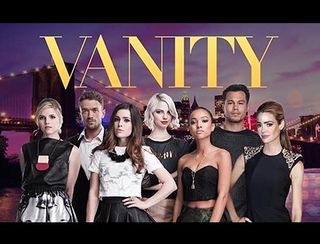Experts: More Millions to Be Made From Online Video Content

When social-first entertainment company Fullscreen Media got off the ground in 2011, it made sense that the company was YouTube-centric in what it created. After all, company CEO George Strompolos was a co-creator of YouTube’s Partner Program, which let content creators monetize their YouTube videos.
But, speaking during a panel at the recent Silicon Beach conference in Los Angeles, Bryan Thoensen, senior VP of original entertainment for Fullscreen, said YouTube can’t be an online content creator’s only focus today.
“Fullscreen got into the business by understanding the YouTube platform, operationally and from the audience perspective,” he said. “Where you’re seeing an evolution is having ubiquitous knowledge about every platform, understanding how to monetize, knowing what the audience behavior looks like, seeing how creators relate with their viewers.
“There’s a narrative story that can live anywhere.”
Snapchat, Instagram, Facebook, you name it, each has platform-specific storytelling opportunities today, and those managing social media talent shouldn’t try to “shoehorn longer-form content in the wrong environment,” Thoensen said. “All of these platforms out there provide a great opportunity for stories to be told.”
He and other digital experts have tackled the main challenges standing in the way of keeping viral content creators from achieving the perfect combination of fame and profitability. For every PewDiePie and Smosh there’s 10,000 almost-rans who’ll never see the millions the top digital performers pull in.
Figuring out a “bigger picture” deal for online content is key today, according to John Roberts, chief digital officer for Bunim Murray Productions, and that means looking for multiple avenues for talent to be exposed. “We always say that content is king, and it has to be compelling,” Roberts said. “But the queen is distribution.” That’s why you see the likes of NBC inking deals with Snapchat for mini series of hit shows such as The Voice via social media.
Broadcasting & Cable Newsletter
The smarter way to stay on top of broadcasting and cable industry. Sign up below
“It’s such a great opportunity for talent… when [subscription video-on-demand] and [over-the-top] first started, talent didn’t want to experiment with those formats, because they had built their audiences on YouTube, and only that format,” agreed Amy Finnerty, head of talent for Maker Studios. “Now they want to push their boundaries, and see if their audience wants to follow them to other platforms.”
Internet talent first started to become household names during the MySpace days, and now companies such as Abrams Artists Agency have entire divisions dedicated to mining the web for “the next big thing,” according to Alec Shankman, senior VP and head of alternative programming, licensing and digital media for Abrams.
“We’ve got people now making millions and millions a year just leveraging social audiences,” Shankman said. “And that turns into licensing in all sorts of areas, for both scripted and unscripted talent.”
But be careful not to try to shove a roundshaped talent into a square-sized hole: panelists remembered when YouTube attempted to have several of its most popular talent do a stage comedy show about a year ago, and it didn't turn out well. And another persisting issue surrounding online-based talent and series is getting brands on board. It’s possible to get major brand backing (panelists pointed to Canvas Media Studios’ Maybelline- branded web series Vanity, with the women’s makeup and cosmetics company coming to the table at the start knowing it was sponsoring the series).
“But that’s the exception to the rule,” cautioned David Tochterman, co-founder of Canvas. But when a major brand does choose to back an online endeavor, it can have long-lasting benefits for everyone involved, Finnerty added. She pointed to the long-running hit YouTube series Convos With My 2-year-Old, which has seen insurance company Geico backing the clips for the last three years.
“They developed a relationship with a brand, and they keep coming back,” she said. “Once you get that relationship going, and they understand how the talent is going to represent them, they get comfortable. And it opens up other revenue opportunities for the talent.”
